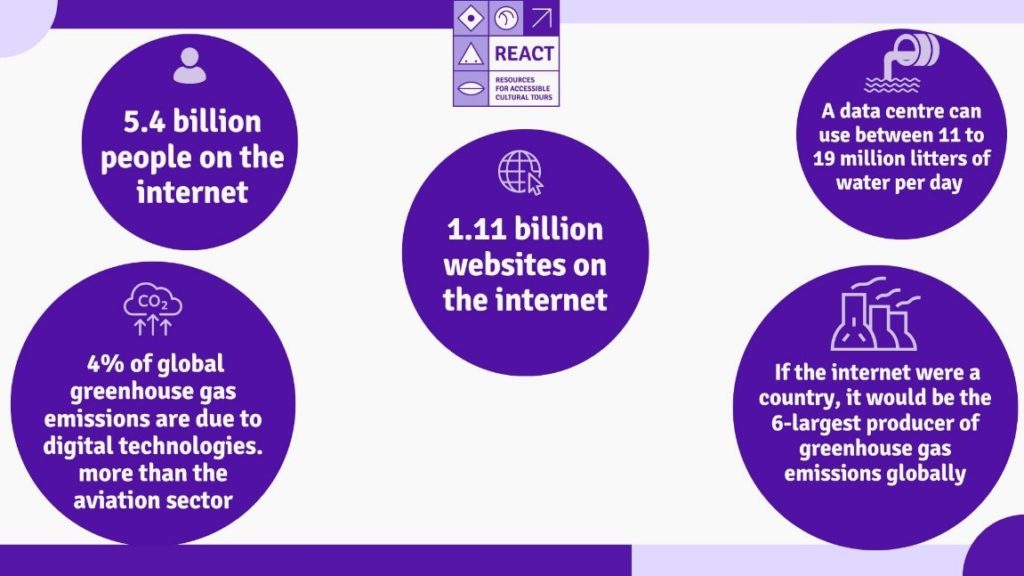Understanding the impact and the carbon footprint of digital technologies and online activities
Even seemingly small digital interactions have an environmental cost.
Everyday digital actions, including social media use and video streaming, contribute significantly to CO2 emissions (Batmunkh, 2022; Sharma & Dash, 2022). The carbon footprint associated with the internet is large and continues to grow rapidly.
To picture the scale of this impact, let us consider some numbers:
- Approximately 5.4 billion people, or 67% of the world’s population, are using the Internet according to the International Telecommunication Union.
- There are 1.11 billion websites on the Internet, and approximately 7.5 million blog posts are published each day (Climate Impact Partners, 2023).
- If the Internet were a country, it would the equivalent be the sixth-largest producer of greenhouse gas emissions globally
- It is reported that digital technologies contribute to approximately 4% of global greenhouse gas emissions—surpassing even the entire aviation industry (Climate Impact Partners, 2023).
- A typical data centre can use between 11 and 19 million litters of water per day (Hsu, 2022).

The fast increase in the number of Internet users and websites is leading to more data being created, stored and transmitted which is adding to the cumulative carbon footprint of the digital technologies.
The factors leading to the significant environmental impact of digital practices
The environmental impact of digital practices stems from two key factors:
- Device Manufacturing
The production and transportation of digital devices (smartphones, laptops, servers, etc.) require significant energy due to raw material extraction and energy-intensive manufacturing processes. This leads to a substantial carbon footprint and contributes to e-waste, which contains harmful materials if not properly managed. Rapid device turnover further exacerbates the issue. To reduce the carbon footprint, addressing the consumption, production, and responsible disposal of devices is crucial. - Data Costs
Data centres, which store and process vast amounts of digital information, are energy-intensive, requiring electricity for both servers and cooling systems. As data generation continues to rise, so do the energy demands. Streaming services and cloud-based applications are major contributors to data transmission, which comes with a significant environmental cost.
By considering the energy consumption and environmental impact of digital operations, museums can take proactive steps toward digital sobriety and sustainability. These practices will be explored in greater detail in the following section.
